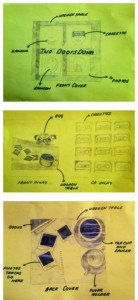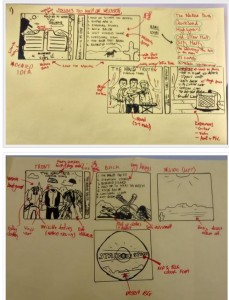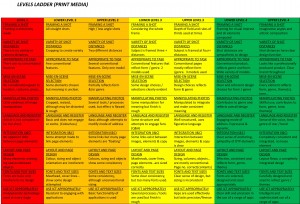
We now need to have a look at how digipaks and adverts are designed to work alongside videos to support the promotion of a new album.
Consider digipak covers. What do they have in common? What are the conventions?
Here are our notes on the conventions of a digipak. Read them when you get stuck.
Now you must find a digipak cover from the same genre as your music video and annotate it for the design conventions. This must be uploaded to your blog. Make it detailed and use the terms from the sheets below. If you can find the back of it too, that would be great for some of the technical conventions i.e. barcode, publisher logo etc.

Here is an example analysis
You should focus on: images, graphics, illustrations, font, colour, technical conventions (barcode, parental advisory, album title on spine, tracks on the back), register of copy, mise-en-scene, composition, intertextual references, how does the cover communicate meaning, denotations and connotations, image manipulation, filters, generic conventions, how can it be ‘read/interpreted’ by an audience, star image, metanarrative, representation?
This is a textual analysis – decode it! Use connectives like connote, infer, imply, represent. This is another way MEDIA LANGUAGE is used to communicate an idea, message, image etc.
In the introduction to the blog post we want you to do a bullet point list of the conventional and technical features that are common to digipaks too – include the spine, inside covers and back cover – what is commonly featured? Bar code? Parental advisory? Name of the album and performer on the spine? Song list on the back? etc



